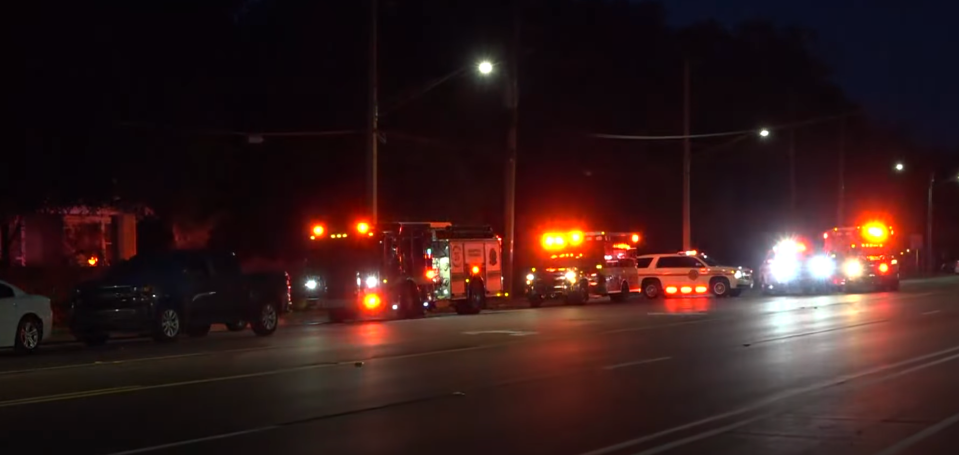Oklahoma will have $11 million to fight opioid abuse, under a grant managed by the Attorney General’s office.
The Oklahoma Opioid Abatement Board announced Tuesday 71 counties, cities, school districts and trusts received grants. About 25 more were invited to resubmit applications that were incomplete or did not cover an approved purpose, a press release from AG Gentner Drummond‘s office said.
“Today the board took an important step in providing resources to tackle the terrible crisis we are seeing across our state when it comes to fentanyl and other deadly opioids,” Drummond said. “I am also pleased we will have the opportunity to offer additional grants once applications that did not meet the grant criteria are resubmitted.”
Grants will support treatment and recovery programs, assistance with co-occurring disorders and mental health issues, opioid abuse education and prevention, proper prescription efforts and strategies to decrease the supply of narcotics across the state.
The City of Tulsa and Tulsa Public Schools received the largest grant, $700,000, after the two entities jointly applied. Their goal was to fund coordinated opioid abatement services between the Tulsa Fire Department, Tulsa Police Department and Healthy Minds Policy Initiative nonprofit organization.
The Comanche County Hospital Authority received $300,000 to establish a women’s and children’s program for opioid-affected families and Woodward County received $75,000 for opioid abuse education and prevention programs targeting middle and high school students.
In 2022, there were nearly 800 opioid-related deaths in Oklahoma, according to the Oklahoma Bureau of Narcotics and Dangerous Drugs, while fentanyl was responsible for 619 fatal overdoses, the statement cited.
MetroTech receives $150K opioid abatement grant
“We were elated, overjoyed,” said Robyn Miller, Senior Director of Operations at MetroTech, which received a $150,000 grant. Even if they didn’t receive the full amount, she still would have been excited to receive any part of the Opioid Abatement Settlement.
“We’re just real excited to implement this next school year.”
MetroTech’s current programming focuses on prevention, drug awareness, suicide prevention awareness for students and staff.
With new funding, MetroTech will be able to fund those prevention programs and certify at least 25 instructors as mental health and first aid responders who are trained to recognize signs of any kind of abuse. Miller said they also need proper disposal locations for prescription medications and implement harm reduction measures, which would allow the distribution of naloxone (Narcan). Lastly, MetroTech will be able to provide therapeutic services such as telehealth and facilitate referrals to certified community mental health centers.
Miller attributes the success of receiving the funds to a strong advisory council, which features about 18-20 members representing MetroTech, the health department, mental health, substance abuse and school districts of varying sizes.
Oklahoma County had the 34th highest drug overdose death rate in the state from 2017 to 2021, and had the 17th highest nonfatal drug overdose hospitalization rate in the state, according to data from the Oklahoma State Department of Health.
“We’re really excited about that piece of the grant award so that we can continue to educate and just have more an awareness program when it comes to opioid use or misuse,” Miller said.
Without the funds, Miller said MetroTech would not be able to offer the services beyond their prevention programs, but she hopes the new efforts help decrease the number of people suffering from any kind of opioid use or misuse. “Now that we have these funds, we can expand beyond just the counseling department.”
Miller was hopeful that they could receive more funding from the Opioid Abatement Program next year to continue the services. Otherwise, the school would need to look for another funding source.
MetroTech serves about 1,500 full-time students and about 31,000 short-term students who earn certifications or receive training. It’s one of 29 career technology centers in Oklahoma.
The grants are a product of legal settlements with opioid manufacturers, distributors and retailers. Oklahoma settled with CVS, Walgreens and Walmart last January, settled with McKinsey & Co. in 2019. The Opioid Abatement Board about four years ago.
Who received Oklahoma opioid abatement grants?
-
Counties who received grants: Adair, Cherokee, Cleveland, Creek, Kingfisher, Leflore, Lincoln, Mayes, Muskogee, Oklahoma, Okmulgee, Payne, Pontotoc, Seminole, Tulsa, Wagoner and Woodward.
-
Cities who received grants: Bartlesville, Bixby, Edmond, Lawton, Lone Grove, Muskogee, Norman, Okmulgee, Pryor Creek, Shawnee, Stilwell and Tahlequah.
-
School districts who received grants: Bartlesville, Bethany, Checotah, Comanche, Dickson, Edmond, Guthrie, Guymon, Hillsdale, Jenks, Keys, Lindsay, Marietta, Maysville, Metro Technology Centers, Moore, Mosely, Norman, Pawhuska, Perkins-Tryon, Purcell, Sand Springs, Shawnee, South Coffeyville, Stigler, Stillwater, Stillwell, Tishomingo, Union, Warner, Western Heights and Westville.
-
Trusts who received funds: Cardinal Point Public Trust, Comanche County Memorial Hospital Authority, Grady Memorial Hospital Authority, McAlester Regional Health Center Authority, Norman Regional Hospital Authority, Southwestern Oklahoma Development Authority and Tahlequah Hospital Authority.
-
Entities applying jointly: Jackson County and City of Altus; Rogers County and City of Claremore; and City of Tulsa and Tulsa Public Schools.
Who did not receive Oklahoma opioid abatement grants?
-
Counties asked to apply again: Hughes County, Haskell County, Larimer County, McCurtain County, Osage County, Pittsburg County and a multi-county coalition including Beckham County, Caddo County, Comanche County, Cotton County, Custer County, Grady County, Greer County, Harmon County, Jefferson County, Kiowa County, Stephens County and Tilman County.
-
Cities asked to apply again: Gore, Guymon, Haileyville, Hartshorne, Hugo, Ponca City, Savanna, Slaughterville and Warr Acres.
-
School districts asked to apply again: Lawton, Northwest Technology Center and Owasso.
Broken Arrow Public Schools and the City of Broken Arrow were asked to submit their joint application again.
This article originally appeared on Oklahoman: Oklahoma Opioid Abatement Board announces $11 million in grants
Signup bonus from





